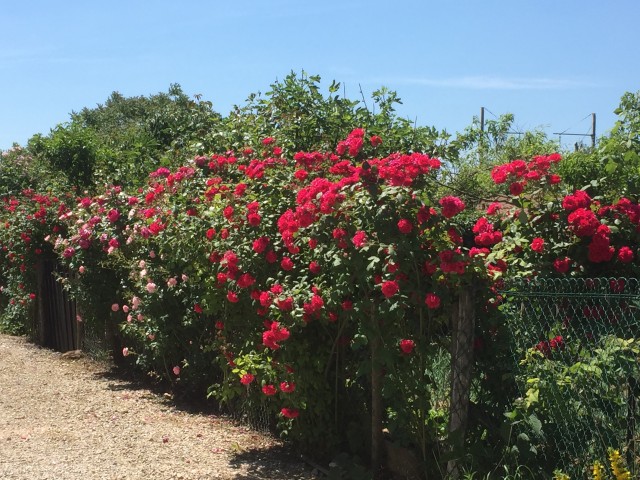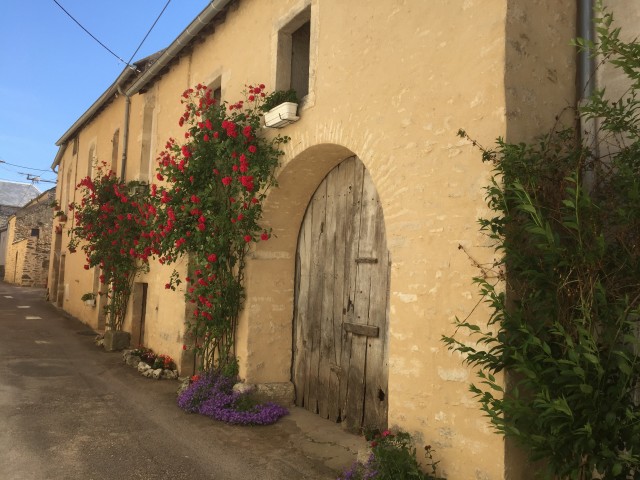Spring is a fantastic time here in central Bourgogne, with the landscape changing dramatically over a matter of weeks. Warmer days and lighter evenings give us the ideal opportunity to walk and cycle through some of the oldest and most famous wine villages in existence.
From the beginning of May, the vines begin growing in earnest. The ancient root stock transforms from wizened brown stumps, through emerging bright green leaf buds, to phenomenal growth spurts reaching over one metre in length by the end of the month. The vintners certainly have their work cut out. Continually ploughing – some preserving traditional methods using huge plough horses and massive hand-held ploughs – this is not work for the faint-hearted. Trimming, tying in, and checking the emerging grapes’ progress gives us the opportunity to see the vineyards full of activity every day. Irises and roses are also blooming amongst the vines, providing a beautiful early warning system for disease.

Apart from the vines, the area has a fantastic variety of scenery that is often overlooked. Cherry orchards with trees groaning with fruit ripe for picking, blackcurrant bushes providing the crop for our world-famous Dijon Cassis, huge Charolais cattle grazing peacefully on the lush grass in the fields, bordered by a stunning array of wild flowers. The Côte d’Or is not just about wine!

Wildlife too is appearing from hibernation. Hedgehogs are snuffling out snails and slugs, and pine martins are expecting their young to emerge anytime soon. We can also see a variety of deer, together with their fauns, if very lucky. Whilst overhead buzzards, black kites and kestrels are patrolling the fields and vineyard edges, floating on the thermals, hoping for a tasty rodent to appear. Migrants are also back. The cuckoo can be heard calling in all the woodland areas on the plateau – Gevrey Chambertin right down to Meursault. And they’ve been accompanied in their trip from Africa by a number of other birds – swallows, swifts and house martins can all be found performing death-defying swoops, scooping up insects, and constructing their nests along the eaves of houses and barns in all our historic villages. Nightingales are also in full song now, although rarely seen.
All in all, this is a magical time of year. The whole area has woken from the freezing sub-zero temperatures of winter, making the most of the warm air and clear blue skies. For us mere mortals, sitting in the sun, with a glass of local wine, listening to the birdsong, is truly glorious.